It’s hard to believe it’s been nearly two years since I first shared my DIY face cream recipe! It’s not so “new” anymore, so I thought it was time for a little moisturizing update.
Each time I revisit this recipe, I tweak and improve it, experimenting with new ingredients and benefits to make it even more nourishing for the skin. New ingredients, new glow, new skin! That’s my mantra.
No doubt, I’ll be back with another upgrade in a year or two, but for now, I’d love to hear what you think of this latest formula.
So, here’s how to create your own natural homemade face cream for glowing skin. Say goodbye to expensive store-bought creams and hello to healthy, radiant skin!

Just like my popular DIY wrinkle cream, this updated anti-aging face cream helps reduce and prevent fine lines. It’s beautifully non-greasy, absorbs quickly, and leaves your skin silky soft. I like to apply it after my homemade anti-aging serum, it helps the serum absorb faster and balances any leftover oiliness.
First up, I’ll show you how to make my Rose Anti-Aging Cream for mature skin. Then keep reading because I’ve included several more moisturizer recipes here, I think you’ll absolutely love!
Watch How To Make Face Cream At Home
About My Homemade Face Cream
Moisturizing is the most important part of skincare. Without it, the skin can look tired and dry and age faster.
The best face creams replenish moisture for the skin, as well as helping to lock it in so that our skin looks fresher and more supple for longer. Furthermore, as emulsions, they are amazing carriers for a whole range of different botanical and synthetic ingredients that can be fantastic for our skin.
Glycerites, tinctures, macerated oils, extracts of all kinds, emollients, silicones, esters, humectants, and so on can all be used here. Without a solubilizer, the emulsion is the only moisturizing product that can use water and oil-soluble ingredients together.
Furthermore, combining water and oil makes a facial lotion recipe relatively lightweight. It’s an excellent choice for anyone who doesn’t need or doesn’t like heavy skin care products. However, there is a lot of scope to customize your homemade moisturizers, meaning you can make them as heavy or as light as you want.
This means that no matter your skin type, you can always tweak your homemade face cream to suit your skin type. This is not always true with gel moisturizers and anhydrous formulas (facial balms & crème).
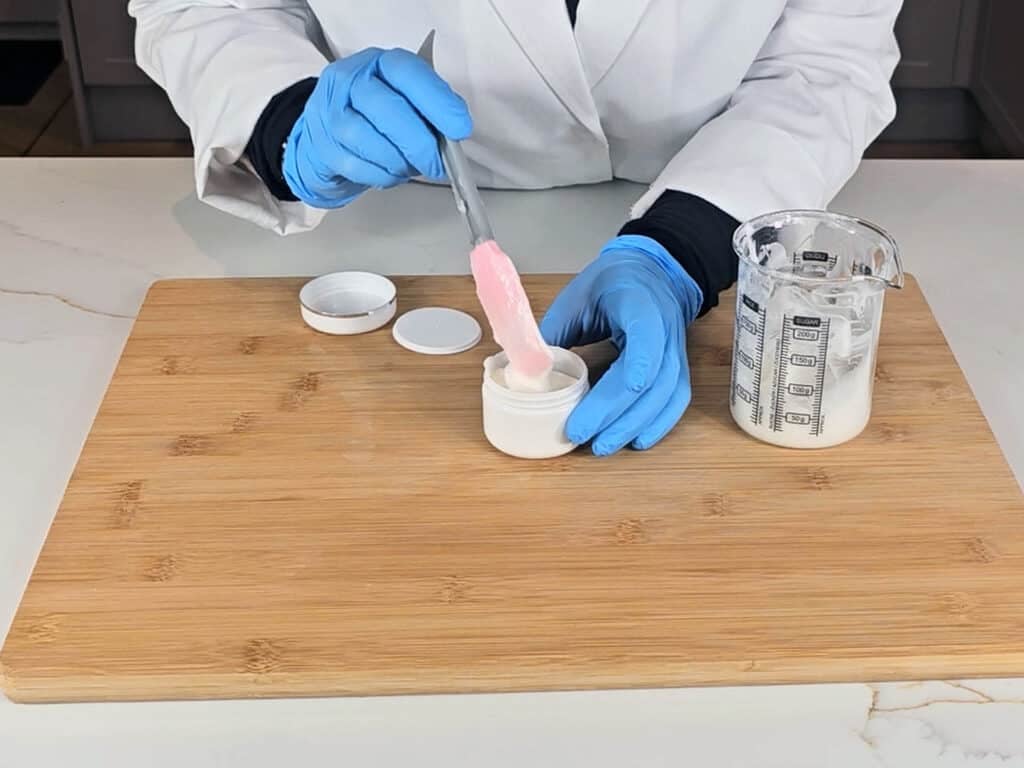
What’s In This DIY Face Cream Recipe?
I’ve formulated this homemade face moisturizer for aging skin, however, it includes a blend of gorgeous natural ingredients that will nourish all skin types. Let’s take a look.
Carrier Oils and Butters
I didn’t want to overcomplicate this formula, so I’ve gone for just the one carrier oil and cosmetic butter. For these, I’ve selected Argan Oil and Shea Butter.
You may have seen it as an ingredient listed on many different hair treatments, but Argan oil is also fantastic for dry skin. It’s intensely hydrating, packed with nutrients, and high in antioxidants. So kiss goodbye to dry, dull, and damaged skin.
And I’ve paired this with shea butter, perhaps one of my favorite cosmetic ingredients. It’s even more nourishing and hydrating than the argan oil.
It also helps to soften the skin, leaving it feeling silky, soft, and supple. You’ll be surprised how much dry skin can bounce back with care and the right ingredients.

Humectants and Olive Squalane
Because no emulsion is complete without a humectant, I’ve decided to really treat myself. And so should you! Humectants are ingredients that draw moisture to a product. It helps keep them from going dry in between uses but also helps to keep the skin more supple.
That’s right, humectants will draw moisture from the atmosphere and impart it to the skin when applied. Therefore, this formulation will continue to hydrate your skin long after you have applied it.
Glycerine is perhaps the most universal humectant, and just about anyone should be able to get hold of it. But I’ve paired it with d-Panethol, which is fantastic at soothing skin, reducing inflammation, and delivering hydration to deeper levels of our skin.
Hyaluronic Acid
However, my favorite humectant of all is hyaluronic acid. It’s such a strong humectant that the plumping effect can actually help to ease fine lines and wrinkles. It’s also one of those trendy ingredients, so your friends will be impressed that you’re using it in your own formulations!
Making Hyaluronic Acid Gel
Sometimes I can’t find premixed hyaluronic acid gel, so I make my own using hyaluronic acid powder. It’s super simple and a great way to have it ready for your formulations. I’m including the basic steps below, however, more info on this can be found in my Luxury Serums Course.
- Weigh out 1g of hyaluronic acid powder, 1g of a water-based preservative such as Plantaserve P (Saliguard PCG), and 98g of distilled water.
- Sprinkle the HA powder over the water without stirring, add your preservative, and then cover the container.
- Let it sit undisturbed for several hours. How long depends on the molecular weight of your HA, but basically until the powder is fully hydrated and there’s no dry residue. Once it’s all absorbed, stir well to get a smooth, uniform gel.
- Bottle it up, label it, and you’re good to go! It stores well and is super handy for quick use in serums or lotions.

Aromaceuticals
Now, we come to our essential oils. Not only do they smell amazing, but they also provide therapeutic benefits. I’ve selected rose geranium and ylang-ylang essential oils. They both have beautiful floral aromas that will pair well but about those benefits for our skin?
Rose geranium is great for balancing the skin’s oil production. While this might sound like it’ll make the skin drier, which is true if you have oily skin, it does the opposite on dry skin. It’s magic stuff, really!
The ylang-ylang is also deeply hydrating, penetrating deep to provide moisture at the very core of our skin. Furthermore, it synergizes with our rose geranium to help boost the production of natural oil in the skin.
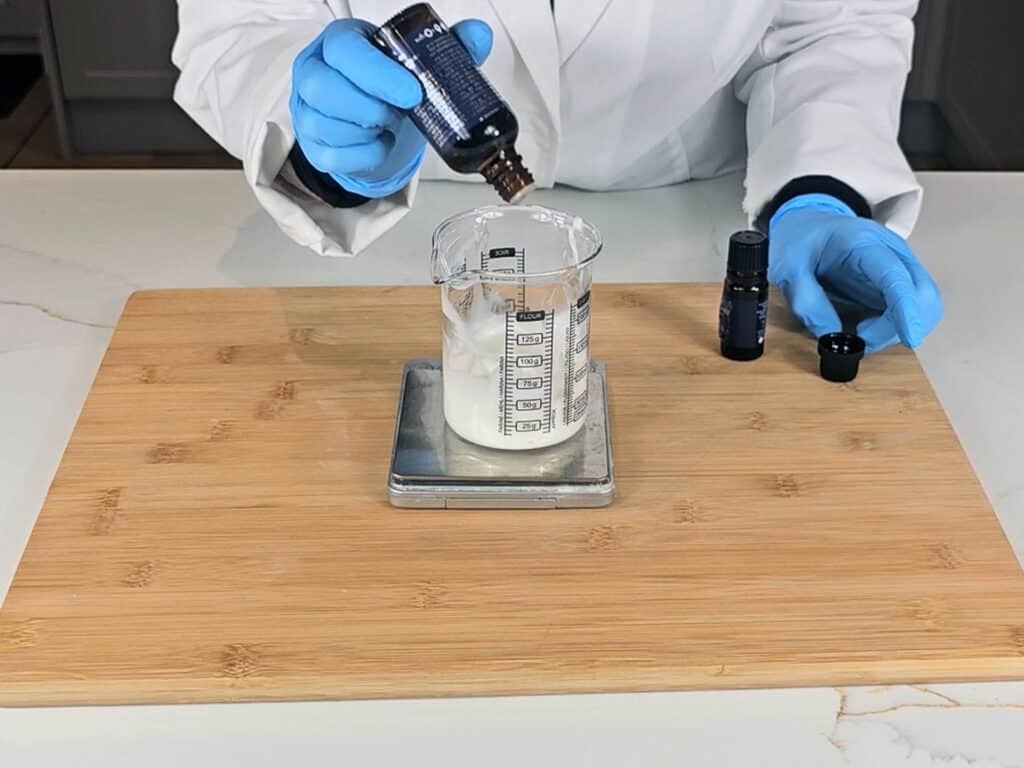
Squalane
Squalane naturally exists in our skin and has many important functions in our body, too. It’s one of the skin’s natural lubricators, keeping skin feeling soft and moisturized on its own.
However, as we age, production diminishes, and by 30, we probably won’t be producing any in our skin anymore. The body actively redistributes away, leaving the skin lacking.
But we can replenish these levels by using a supplement in the form of olive squalane. It’s basically the same thing but derived from olives. And boy, does it sink in fast! It really is a magic oil.
Making Your Own Floral Infusions
To give your homemade face moisturizer that little extra, you can substitute all of the distilled water in the recipe with floral waters (also known as distillates, hydrolats, and hydrosols).
The recipe already calls for some rose hydrosol. Still, you can, if you wish, substitute all the distilled water for this ingredient.
Alternatively, you can make your own floral infusion by steeping dried flower petals or herbs in boiling water for 10 minutes, then straining through a fine strainer or piece of muslin.
For a more in-depth look at how to make your own herbal and floral infusions, please take a look at my post, which shows you exactly how to brew one up in your own home!
Using Preservatives In Face Creams
The homemade face cream below can be kept for a couple of days without preservatives and for 12 months with preservatives added. We don’t, however, recommend omitting it. Who wants to have to make their own face cream every week?
This is particularly important if you go down the ‘making your own floral infusion’ route. You must use a preservative, or it will only stay fresh for a limited time. Even with the preservative in it, you will still have to reduce the cream’s lifespan to 4 months (12 months with purchased flower water/distilled water).
That’s not to say that I wouldn’t recommend making floral infusions; I definitely would; make sure you use a preservative to get your four months.
Adding The Preservative
When it states to add the preservative, you will notice I give a choice of when to add it. When buying your preservative, the packaging should always give a guideline of when it can be added, along with a maximum temperature limit.
Most can now be added at the cooldown phase; this is my preferred method as it eliminates the chance of overheating and destroying it. But always check the recommended usage guide before buying it. Unless otherwise stated, these homemade face creams keep for about one week without preservatives and 12 months with preservatives added.
Ok, let’s make my not-so-basic face cream recipe!
Quick Ingredient Substitution Guide
- Rose Hydrosol: You could choose a hydrosol of your choice or replace it with more distilled water.
- D Panthenol Powder: If you use the hydrated (liquid panthenol), this is not heat stable, so you will need to add it with your cool-down ingredients. If you choose to leave it out altogether, up the glycerin by 1g.
- Argon Oil: Sweet Almond Oil or Jojoba Oil would be good but you could use any that you have to hand.
- Shea Butter: Cocoa butter or Mango would work well.
- Olivem1000: Another emulsifying wax of your choice, but this may affect the thickness of the finished product.
- Cetyl Alcohol: Cetearyl alcohol would be my first choice if I had no cetyl alcohol.
- Hyaluronic Acid Gel: As this is the star of the cream, it isn’t easy to substitute. Replace it with more glycerin, or maybe try sodium lactate.
- Rose Geranium and Ylang Ylan Essential Oils: You can use any essential oil of your choice.
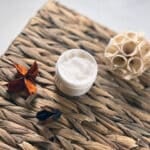
My Face Cream Recipe For Glowing Skin
As an Amazon Associate, I earn from qualifying purchases. If you buy via the links here I may earn a small affiliate commission at no cost to you, please read my affiliate disclosure.
Equipment
Ingredients
Water Part
- 34 g Distilled Water
- 30 g Rose Hydrosol
- 4 g Glycerine
- 0.2 g Xanthan Gum
- 1 g D-Panthenol Powder
Oil Part
- 8 g Argan Oil
- 5 g Olive Squalane
- 2 g Cetyl Alcohol
- 3 g Shea Butter
- 5 g Olivem 1000
Cool Down
- 1 g Vitamin E Oil
- 5 g Hyaluronic Acid Gel (Or use powder and mix your own, see instructions above)
- 0.4 g Rose Geranium Essential Oil
- 0.4 g Ylang-Ylang Essential Oil
- 1 g Preservative (I'm using Geogard ECT – UK its Preservative Eco)
- 1 Cosmetic Jar 4 oz
Video
Instructions
- In a heatproof beaker or container, mix the xanthan gum and glycerin with a flexible spatula until the gum has been dissolved.0.2 g Xanthan Gum, 4 g Glycerine

- Add the distilled water, rose hydrosol, d panthenol powder to the gum slurry and stir well. This is our water phase.34 g Distilled Water, 30 g Rose Hydrosol, 1 g D-Panthenol Powder

- Place the Argon Oil, Olive Squalane, cetyl alcohol, shea butter and olivem1000 into a separate heat proof container. This is our oil phase.8 g Argan Oil, 5 g Olive Squalane, 2 g Cetyl Alcohol, 3 g Shea Butter, 5 g Olivem 1000
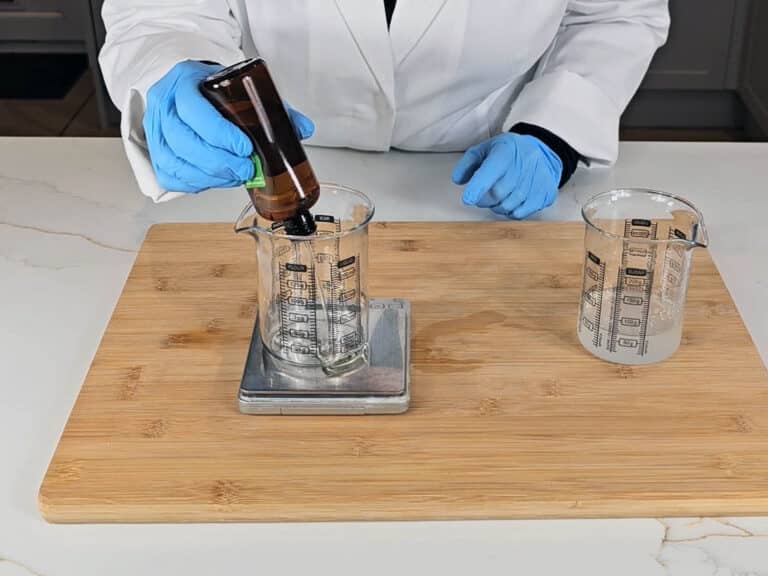
- Make up a water bath by adding a few inches of hot water into a wide shallow pot. Sit both containers into the water and bring the water up to a gentle simmer. Stirring occasionally, leave the containers in the water until the water has been heated through and the waxes and butter has fully melted.

- Once heated, remove from the heat and pour the water into oils. Stir briskly for a couple of minutes to fully combine them. If you have a Norpro mini mixer, the metal blend attachment is great for small batches like this. After blending for a couple of minutes, the cream should have thickened and cooled. From this point, it's important not to use the mini blender as this would break the liquid crystal structures that are beginning to form. We do, however, still need to continue stirring, so transfer to a flexible spatula and continue mixing by hand until the cream cools to 40c (104f).

- Once our cream has cooled to 40 (104f) we can start to add our cool-down ingredients. Start with the vitamin E, followed by the Hyaluronic acid gel, stirring these in well.1 g Vitamin E Oil, 5 g Hyaluronic Acid Gel

- Next, add the Rose Geranium and Ylang Ylan Essential oils and finally, the preservative. Give the cream a good stir to make sure everything is fully combined.0.4 g Rose Geranium Essential Oil, 0.4 g Ylang-Ylang Essential Oil, 1 g Preservative

- Transfer to a suitable container ready for use.1 Cosmetic Jar 4 oz

Notes
How Do I Use This Face Cream
Using your face cream is super easy. Apply a thin layer to the skin, massaging it using circular motions. This will ensure good penetration and an even spread.
If you have particular areas of skin that suffer from dryness, you can apply more liberally here. The cheekbones can often be a little drier than the rest of the face, so applying more here can be very beneficial.
How Often Can I Use This?
Studies have shown that after 8 hours, only 50% of your face cream remains on the skin surface. So, you should absolutely use your DIY face cream daily. However, you won’t get much more benefit from using it more than twice a day, so try not to overdo it. I like to apply creams in the morning and at night. This will give you optimum benefits without wasting any product.
If you have very dry skin, you can combine this with a heavier face moisturizer or a serum. You may also want to use this lighter cream in the morning and your heavy moisturizer in the evening for intense hydration overnight.
FAQ & Troubleshooting
My Face Cream Keeps Splitting
This is likely a problem with your water-to-oil proportions or your e-wax is not up to scratch. Take another look at your e-wax and make sure it’s a good quality one. Polar wax, NF, BTMS-50 are all good choices and work fantastic.
If your e-wax is fine, then your emulsion is destabilizing because your oil and water parts have been measured incorrectly. Make sure to take care when measuring your ingredients, and always use a good digital scale to get accurate measurements. Furthermore, this formula and suggested e-wax is for oil-in-water emulsions only.
What Preservative Should I Use?
Selecting the right preservative seems difficult but is actually pretty simple. You’re looking for something that is broad spectrum but can be soluble in either oil or water for an emulsion formula. I use either Geogard ECT, Preservative Eco, Germaben, or Saligaurd (Plantaserve P). Any of these will work just fine in your emulsions and should prevent any microbial growth for about 12 months.
You will notice that this formula also calls for an antioxidant, in the form of vitamin e. You can swap this out for Rosemary co2 extract if you prefer. However, it is not a preservative on its own. Antioxidants prevent oils and fats from oxidizing and becoming rancid. However, it will not prevent microbial growth in the form of bacteria and fungi.
Why Is My Face Cream Too Runny?
If your face cream is too runny, there’s likely a problem with the emulsifying wax. Check to make sure it’s in date, and that you’re using a good quality e-wax, such as Emulsifying Wax NF, Polawax or BTMS-50.
If you do find that your cream is too runny, and wish to salvage it, you can gently melt it down and add a few more grams of e-wax. This should thicken up nicely. This is best done before you add your cooldown ingredients.
Final Thoughts
I hope you enjoy making these DIY face cream recipes and moisturizers; I know they all work well as I use them myself. Let me know how you get on, and ask any questions in the comments below.
And don’t forget to have a look at my face cream making course for lots more techniques and moisturizer recipes.

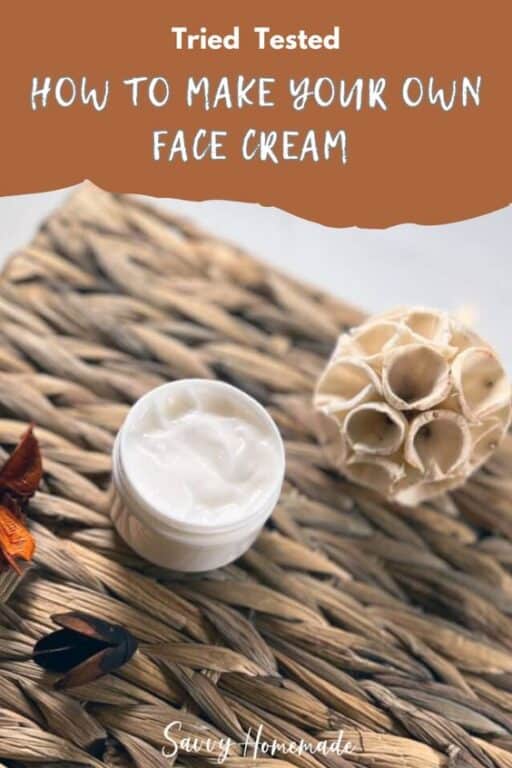
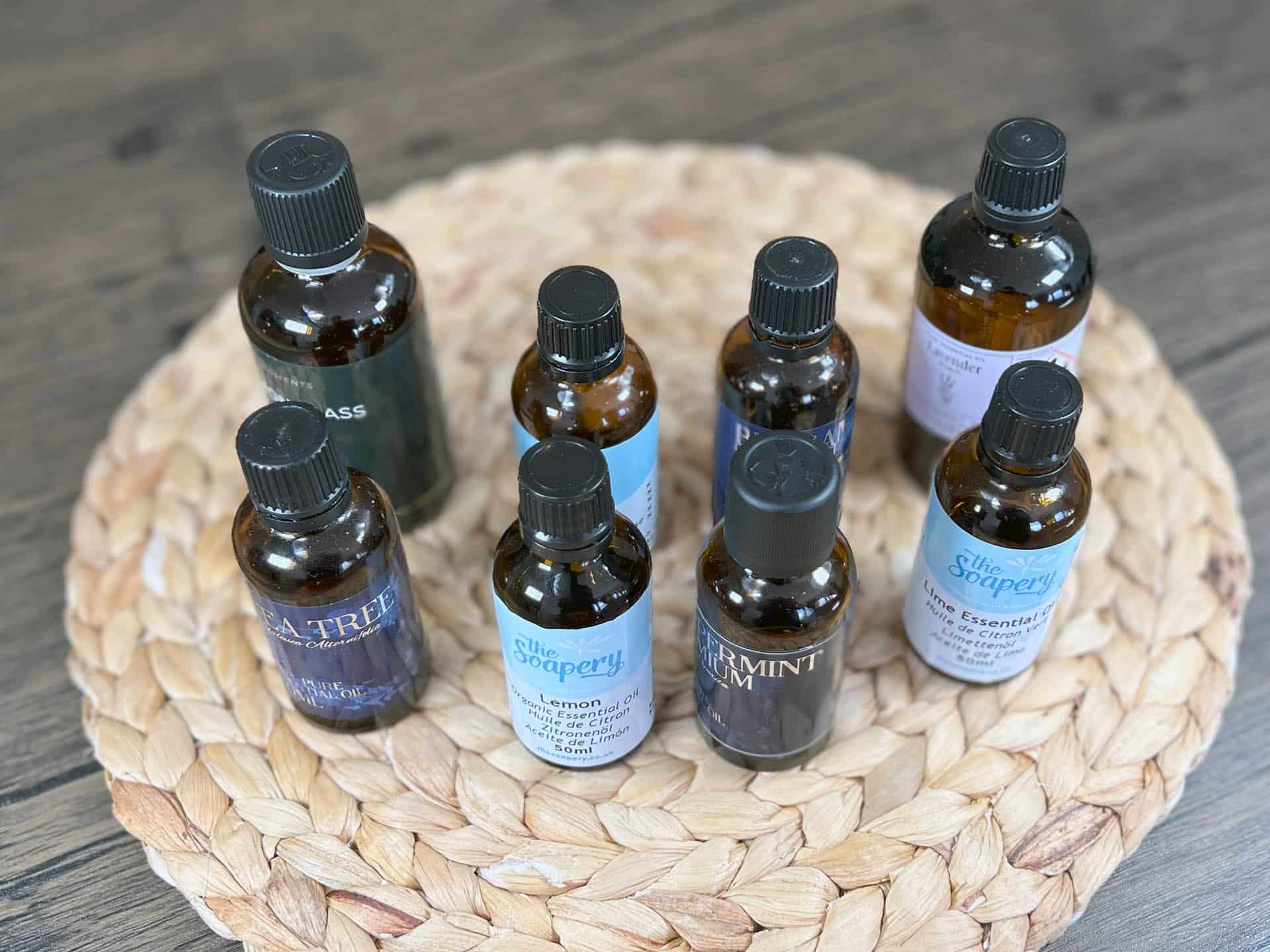





Hi Angela
Other than Rice Bran Oil, is there another alternative to Kukui Oil?
Hi Angela,
If I wanted to add hyaluronic acid to the Mature skin recipe (! – lol, trying everything), at which stage should I add it? Or should I rather add it to a serum? Your thoughts on these would be greatly appreciated. Many thanks. Kind regards.
I’ve just brought ingredients to make the luxury skin boost for dry skin cream. I would like to use lavender and geranium essential oils l and potentially orange essential oil. I wondered if I would need to use orange essential or not because it already includes the orange blossom water. What would you recommend?
Hi Georgina,
I often use floral waters in combination with their partner essential oils. Orange blossom won’t necessarily have all the benefits of orange essential oil, and vice versa. The only issue you may have is that your finished product will smell more orange-like than you may want. But you can offset this by using a little less orange essential oil and make up the difference with your lavender and geranium essential oils.
Hope this helps!
Hello, Angela,
Thank you for these wonderful suggestions. I made one of your face creams twice, albeit at a year’s distance, so I did not remember the second time that it takes FOREVER for the emulsifying wax to melt! Even when the oils and wax looked completely liquefied and I mixed them with the waters, I found a few pellets in there! So I put it back on the stove, as you suggested.
I guess the pellets become transparent when they are almost melted and the mixture looks fully dissolved, but it is not? Is that the reason why I still find pellets after mixing? I did not want to keep the oils on the stove longer than necessary, but perhaps I should leave them there another 5-10 min after they look melted, just to be sure the pellet consistency is completely gone?
Or, am I doing something wrong? In general, have you ever timed the melting time? It would be good to know.
Many thanks in advance, Beatrice
Hi Beatrice,
Yeah, just leave it for a little longer. I like to stir mine as it sits in the water bath. Not continuously, just to get an idea of the texture of the e-wax. But if you’re struggling, you could use a microwave. Sometimes that does the job a little better. No more than 30 seconds at a time, though.
Hi Angela
Which perservative do you recommend sodium benzoate & potassium sorbate or phenoxyethanol & ethylhexylglycerin?
Hi Paula,
Honestly, either of these preservatives will work just fine and should provide the result you’re looking for. So shop around and see which one is cheaper to buy. I would also say that ultimately you would want to get experience using both, so you can decide for yourself which one you prefer. Perhaps start with one, use it until you run out and then next time buy the other. Because these two preservative systems can be used interchangeably (add at around 1%) you shouldn’t have much problem doing this.
Hi Angela
Is there an alternative to kukui nut oil?
Hi Paula,
I’d try substituting the Kuki Nut for something like Rice Bran Oil. It should give you a similar consistency and absorbency.
I LOVE this cream – finally someone who understands dry and/or mature skin! I have recently developed a love for oat oil and hemp oil. The oils in this recipe do not smell nearly as much as oat oil and hemp oil would! I am tempted to try substituting them in place to see how it turns out. Thank you for sharing this lovely recipe!
Hi Angela, do you sell finished products by any chance?
Hi Trish,
As much as I think it would be interesting to make these products to sell, with my current lab set up (which is basically a craft table in my kitchen) I just don’t have the resources. There’s also a lot of red tape involved with selling cosmetic products and I just don’t think I have the time to get into all of that, especially now that I’m a grandma. But I do hope my tutorials inspire you to give DIY skincare a try.
Excellent choice of ingredients and great recipes. Have heard a lot about the anti-aging and skin nurturing benefits of the kukui nut oil. Next one on my to-buy list.
Is the consistency smooth and thin enough to use in an airless pump type container?
Hi Sarah!
I find this cream is a little too thick for a pump container. A glass or PET plastic jar is your best bet.
Hope this helps!
any idea why your pictures make the cream look creamy white, while mine is as yellow as eggs. (I used Beeswax, will try Emulsifying wax next time- not sure if that makes a difference?). The Vit E oil and Wheatgerm oil are both yellowish, is that it? (But then why does yours look white and creamy?)
Hi Jolene!
I’m almost certain that beeswax is the culprit here. While you can get hold of white beeswax, if you give it another go with the emulsifying wax you should get a much lighter color. You’ll also find that your cream will be lighter in texture, and will absorb into your skin much more readily.
Hello. I was wondering if I can substitute the emulsifying wax with beeswax?
Hi Mark,
Interesting question. I’ve wondered myself in the past and I have given it a go. I found that it was much more difficult to get the oil and water to stay together, and had to use significantly more beeswax than I would normally use of the emulsifying wax. I also didn’t much like the consistancy of the cream as it was incredibly waxy and would take a very, very long time to sink in.
All in all, I really wouldn’t recommend it. If you’re looking for something to protect your skin from the elements, you’re better of making a balm (they aren’t just for lips and can be used pretty much everywhere!).
I’m disappointed to see this reply. I wondered the same when seeking to purchase my ingredients. When I click on your link for “Emulsifying Wax” in your DIY anti-aging skin cream, it takes me to a page that lists Beeswax, and you specifically say in your directions “Beeswax is my go-to”. Therefore, I ordered Beeswax, have used pricey ingredients to make this recipe, only to experience the same thing: separation, a thick waxy substance that does not seem very appealing.
I feel that your directions and recommendations are very misleading if you now indicate that Beeswax is not the recommended choice.
Hi Jolene,
I was sorry to read that you’ve had problems with this recipe. It’s important to read my recipes very carefully and follow the ingredients exactly as they are stated on the page. While I understand that you’ve click one of my links in the ingredients section, these pages can talk about ingredients more generally (as we direct people to these pages from all over out website) and it’s always best follow the instructions on my DIY blog post.
Beeswax is not suitable as a emulsifying agent. Like you said, you end up with a waxy mess that can separate. While beeswax is my go to for anything I can use it in (i.e. candles, balms, soaps etc.), it really isn’t suitable here.
I hope this clears things up. But don’t worry about having bought the beeswax, there will be plenty of uses for it and it really is a wonderful ingredient.
Hi Angela. I have been making creams and lotions for while about a year. Avocado oil is good for dry skin. When I make it for myself I still use it because it keeps the skin moisturized. I never heard of melon oil. Your ratio is as I have noticed 60% water 30 oil and 10 emulsifier. I usually use this type of formulation. At the cooling phase I add helichrysum , lavander, rose essential oil, carrot seed oil,and vitamin e. It kind thins out the cream turns out great ! Preservatives like Germall Plus is .5 to 1.0 rate . Thank you for sharing these wonderful recepies.
Can you use beeswax instead of emulsifying wax? I just made a batch, but wants to keep separating. Thanks.
Hi Margie
The emulsifying wax is the ingredient that binds everything together, so yes you will need this to stop the separation of oils and water. That’s not to say you cant have some beeswax as well which will produce a harder product.
This recipe is a must have …thank you for sharing ,a lot of my friends would like this.